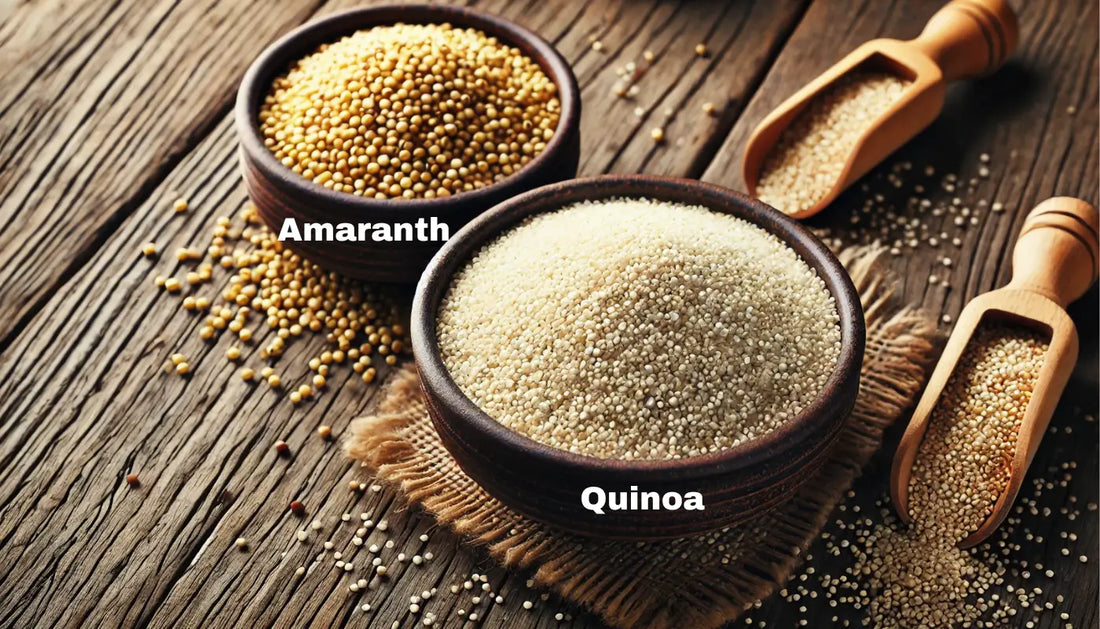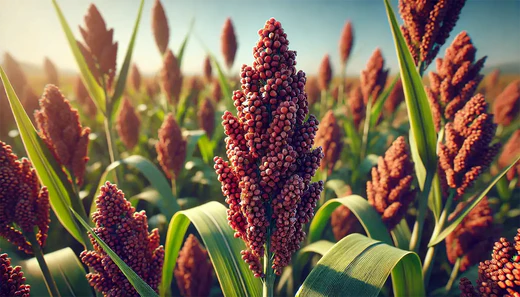
The ultimate guide to the superpowers of amaranth and quinoa
Amaranth and quinoa are two of the healthiest grains you can add to your diet. These superfoods are packed with nutrients that boost your overall well-being. Both have gained popularity in recent years, and for good reasons. They are gluten-free, rich in protein, and loaded with essential vitamins and minerals. The superpowers of amaranth and quinoa deserve a spot in your pantry.
What makes amaranth and quinoa so special?
Amaranth and quinoa are known as "pseudo-grains." This means they are seeds, but we use them like grains. Unlike regular grains, these superfoods are gluten-free and have an impressive nutritional profile. They are both ancient grains, cultivated for thousands of years by civilizations like the Incas and Aztecs.
These seeds are not only versatile in the kitchen but also come with numerous health benefits. They contain high-quality protein, fibre, and antioxidants. Adding them to your diet can provide a natural way to boost energy, improve digestion, and even support heart health.
Amaranth: A tiny grain with big benefits
Amaranth might be small, but it is mighty. It has a unique nutty flavour and a soft, creamy texture when cooked. Here are some of the key benefits of amaranth:
-
High in protein
Amaranth contains more protein than most grains. It has around 9 grams of protein per cup when cooked. This makes it a great addition to your meals if you are vegetarian or vegan. It also contains lysine, an amino acid missing in many grains, which helps with muscle repair and growth. -
Rich in fibre
Fiber is essential for a healthy digestive system, and amaranth has plenty of it. One cup of cooked amaranth provides around 5 grams of fibre. This fibre can help reduce cholesterol levels, aid digestion, and keep you feeling fuller for longer. -
Packed with minerals
Amaranth is an excellent source of iron, magnesium, phosphorus, and manganese. Iron helps in transporting oxygen throughout your body, while magnesium is crucial for muscle function. Phosphorus supports healthy bones, and manganese acts as a powerful antioxidant.
Quinoa: The king of protein-packed seeds
Quinoa has become the king of superfoods, and for good reason. It has a light, fluffy texture and can be used in many dishes. Let’s take a look at what makes quinoa stand out:
-
Complete protein source
Quinoa is one of the few plant-based foods that provide complete protein. This means it contains all nine essential amino acids your body needs. For those following a plant-based diet, quinoa is an excellent way to meet protein requirements. -
Rich in antioxidants
Quinoa contains antioxidants, which protect your cells from damage. One such antioxidant is quercetin, known for its anti-inflammatory and antiviral properties. Eating foods rich in antioxidants can help lower the risk of chronic diseases. -
Low glycaemic index
Quinoa has a low glycaemic index, which means it does not spike blood sugar levels. This makes it a great option for people with diabetes or those trying to manage their blood sugar. Eating quinoa regularly may help maintain energy levels and support weight management.
Health benefits of including amaranth and quinoa in your diet
Adding amaranth and quinoa to your diet can do wonders for your health. They are nutrient-dense foods that contribute to overall wellness in many ways.
-
Supports heart health
Both amaranth and quinoa are good for your heart. Their high fibre content helps in lowering bad cholesterol levels. Magnesium found in both seeds also helps in relaxing blood vessels, reducing the risk of high blood pressure. -
Promotes digestive health
The fibre in amaranth and quinoa promotes a healthy digestive system. It helps prevent constipation and supports healthy gut bacteria. Regular consumption of these grains can improve digestion and promote a healthy gut environment. -
Aids in weight management
Amaranth and quinoa are both filling, thanks to their fibre and protein content. Including them in your meals can help you feel full for longer periods, reducing the urge to snack between meals. This makes them a great option for anyone looking to maintain or lose weight.
How to add amaranth and quinoa to your diet
Incorporating amaranth and quinoa into your daily meals is easy and delicious. Here are some simple ideas to get you started:
-
Use as a base for salads
Cooked quinoa or amaranth makes an excellent base for salads. Just add your favourite veggies, some olive oil, and lemon juice for a quick and nutritious meal. -
Add to soups and stews
Amaranth and quinoa can add texture and nutrition to soups and stews. Just add a handful while cooking to make your meal heartier. -
Make breakfast bowls
Both amaranth and quinoa work well as a breakfast option. Cook them with milk or water, and top with fruits, nuts, and a drizzle of honey for a tasty, energy-packed breakfast.
Quinoa vs. amaranth: Which one should you choose?
Both quinoa and amaranth are nutritious and offer unique benefits. Quinoa is a complete protein and has a lighter texture, making it great for salads and bowls. Amaranth, on the other hand, is higher in certain minerals and has a nuttier flavour.
If you are looking for a complete protein source, quinoa is the winner. If you need more iron and magnesium, then amaranth is a great choice. Ideally, you should include both in your diet to enjoy the wide range of nutrients they provide.
Final thoughts on the superpowers of amaranth and quinoa
Amaranth and quinoa are true superfoods that can enhance your health in numerous ways. They are versatile, easy to cook, and packed with nutrients. By including them in your meals, you can enjoy better heart health, improved digestion, and sustained energy levels. Whether you choose amaranth, quinoa, or both, your body will thank you for the extra nutrition.
Give these power-packed seeds a try today, and discover the difference they can make in your diet. Your journey towards a healthier lifestyle can begin with just a simple addition of these nutrient-rich superfoods.
Image Courtesy: Food & Wine
Did you find this blog post helpful? Got ideas or questions? Join the conversation below! Your insights could help others too, so don’t hesitate to share!
Please note that all comments will be moderated before being published.




